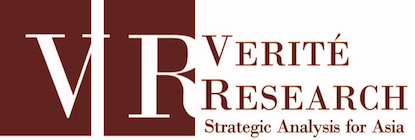History
Sri Lanka’s history of media ownership, especially state-owned media, dates back to the British colonial period, where Sinhala and Tamil language papers, such as Lankaloka and Illangai Pathukavalan, began as a response to the colonial control over ownership and content. Growing independence movements eventually led to Sri Lanka, then Ceylon, achieving dominion status in 1948. In 1972, Ceylon became a republic and changed its name to Sri Lanka. Since independence, media outlets rendering content in Sinhala and Tamil have increased. Although the colonial administration’s ownership of media was criticised, the post-independent government has seemingly adopted similar measures of state-ownership – and by extension – control over media.
By way of monopolising the media sphere, the government took steps towards nationalising key media institutions from as early as the 1960s. The dynamics of state control over media notably shifted, taking stronger steps from media ownership towards regulation with the second insurgency in 1987 led by the left-wing party, the Janatha Vimukthi Peramuna (JVP), and the armed conflict between the Liberation Tigers of Tamil Eelam (LTTE) and the state. As an alleged trigger to the killing of 13 state soldiers by the LTTE, the armed conflict between the two forces began in July 1983. Prior to this however, there were several points of contention between Sinhala-inclined and Tamil-inclined politicians, including the Official Language Act No. 33 of 1956 (Sinhala Only Act). After a brutal 26-year period of violence, the LTTE was militarily defeated by the state in May 2009. While measures were taken to increase the privatisation of media during this time, the Janatha Vimukthi Peramuna (JVP) insurgency and armed conflict with the LTTE became instances to justify the need for greater state regulation.
Entering the political sphere under the mandate of ‘good governance’, the current government has recurrently emphasised the importance of protecting fundamental freedoms, including media freedom. However, the plurality of ownership and opinion remains a pertinent concern even in the post-war landscape.
Sources
Bahai Teachings. (2013). Baha’is and Communism.
Image retrieved from Bahai Teachings on 11 October 2018.
Commonwealth Legal Information Institute. Sri Lanka Press Council Law (No. 5 of 1973).
Retrieved from Commonwealth Legal Information Institute on 23 July 2018.
Commonwealth Legal Information Institute. Ceylon Broadcasting Corporation Act (No. 37 of 1966).
Retrieved from Commonwealth Legal Information Institute on 23 July 2018.
Commonwealth Legal Information Institute. Proscribing of Liberation Tigers of Tamil Eelam And Other Similar Organisations Law (No. 16 of 1978).
Retrieved from Commonwealth Legal Information Institute on 23 July 2018.
Crawley, William, Page, David, and Pinto-Jayawardena, Kishali. (Eds.). (2015). Embattled Media: Democracy, Governance and Reform in Sri Lanka.
Retrieved from Google Books on 23 July 2018.
Daily News. (2017). The following extract is reproduced from Ceylon Daily News of February 5, 1949.
Image retrieved from Daily News on 11 October 2018.
De Silva, Annemari. (2018). Limits of Expression: Creative Artists and Censorship in Sri Lanka (Publication).
Retrieved from International Centre for Ethnic Studies website on 23 July 2018.
Doyle, Kit. (2018). A recent study suggests widespread censorship of student publications at American Christian schools.
Image retrieved from Religion News Service on 11 October 2018.
Jones, Derek. (2001). Censorship: A world encyclopedia.
Retrieved from Google Books on 23 July 2018.
Lake House. Our History- Lake House Building.
Image retrieved from Lake House on 11 October 2018.
Liyanawatte, Dinuka. (2013). An air force officer holds Sri Lanka's national flag as the sun sets at Galle Face Green in Colombo.
Image retrieved from Foreign Affairs on 11 October 2018.
New Democratic Front. The Election Manifesto of President Maithripala Sirisena. New Democratic Front.
Retrieved from New Democratic Front on 23 July 2018.
Parliament of the Democratic Socialist Republic of Sri Lanka (2018). The Right to Information Act No. 12 of 2016.
Retrieved from Parliament of the Democratic Socialist Republic of Sri Lanka on 23 July 2018.
Perper, Rosie. (2018). After declaring a state of emergency, Sri Lanka has banned Facebook, Instagram, and WhatsApp.
Retrieved from Business Insider on 23 July 2018.
Reporters without Borders. (2016). World Press Freedom Index 2008.
Retrieved from Reporters without Borders on 23 July 2018.
Seneviratne, Madhura. (2017). 20th Amendment requires referendum after gaining two-thirds majority.
Image retrieved from SBS on 11 October 2018.
The Sunday Times (2018). TRC shuts TV network linked to Prime Minister’s brother
Retrieved from the Sunday Times on 23 July 2018.
The Sunday Times. (2018). FMM condemns President Sirisena’s attempt to re-activate Press Council.
Retrieved from the Sunday Times on 23 July 2018.
Vikalpa. (2010). Let's bring justice to Black January.
Image retrieved from Flickr on 11 October 2018.


